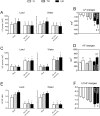Post-exercise hypotension and heart rate variability response after water- and land-ergometry exercise in hypertensive patients
- PMID: 28658266
- PMCID: PMC5489191
- DOI: 10.1371/journal.pone.0180216
Post-exercise hypotension and heart rate variability response after water- and land-ergometry exercise in hypertensive patients
Abstract
Background: systemic arterial hypertension is the most prevalent cardiovascular disease; physical activity for hypertensive patients is related to several beneficial cardiovascular adaptations. This paper evaluated the effect of water- and land-ergometry exercise sessions on post-exercise hypotension (PEH) of healthy normotensive subjects versus treated or untreated hypertensive patients.
Methods: Forty-five older women composed three experimental groups: normotensive (N, n = 10), treated hypertensive (TH, n = 15) and untreated hypertensive (UH, n = 20). The physical exercise acute session protocol was performed at 75% of maximum oxygen consumption (VO2max) for 45 minutes; systolic (SBP), diastolic (DBP) and mean (MBP) blood pressure were evaluated at rest, peak and at 15, 30, 45, 60, 75 and 90 minutes after exercise cessation. Additionally, the heart rate variability (HRV) was analyzed by R-R intervals in the frequency domain for the assessment of cardiac autonomic function.
Results: In both exercise modalities, equivalent increases in SBP were observed from rest to peak exercise for all groups, and during recovery, significant PEH was noted. At 90 minutes after the exercise session, the prevalence of hypotension was significantly higher in water- than in the land-based protocol. Moreover, more pronounced reductions in SBP and DBP were observed in the UH patients compared to TH and N subjects. Finally, exercise in the water was more effective in restoring HRV during recovery, with greater effects in the untreated hypertensive group.
Conclusion: Our data demonstrated that water-ergometry exercise was able to induce expressive PEH and improve cardiac autonomic modulation in older normotensive, hypertensive treated or hypertensive untreated subjects when compared to conventional land-ergometry.
Conflict of interest statement
Figures



References
-
- Pescatello LS, Franklin BA, Fagard R, Farquhar WB, Kelley GA, Ray CA. American College of Sports Medicine position stand. Exercise and hypertension. Med Sci Sports Exerc 2004; 36(3):533–553. - PubMed
-
- World Health Organization. The World Health Report 2002: Risks to Health Geneva: World Health Organization, 2002.
-
- Kanavos P, Ostergren J, Weber MA. High blood pressure and health policy: Where we are and where we need to go next. New York, USA: Ruder Finn Inc; 2007.
-
- Indicators of risk and protective factors. Brazil: Ministry of Health, IDB 2010. http://tabnet.datasus.gov.br/cgi/tabnet.exe?idb2010/g02.def.
-
- Jardim PC, Souza WK, Lopes RD, Brandão AA, Malachias MV, Gomes MM et al. I RBH—First Brazilian Hypertension Registry. Arq Bras Cardiol 2016; 107(2):93–98. doi: 10.5935/abc.20160120 - DOI - PMC - PubMed
MeSH terms
LinkOut - more resources
Full Text Sources
Other Literature Sources
Medical
Miscellaneous

